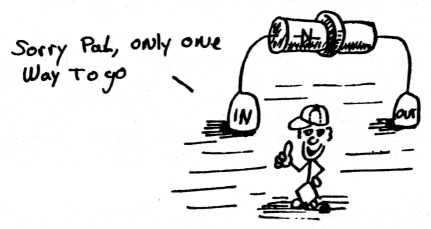
One of the most significant developments of the twentieth
century is undoubtedly the semiconductor. These devices are nothing short of
miraculous, and without them there would be no satellite TV, and no PCs. Most
semiconductor devices these days are made of silicon material, though you might
occasionally find a diode or transistor made from germanium. But what are they
really, and how do they work?
The simplest semiconductor of all is the diode, and it allows electricity to flow in only one direction. One obvious use might be to protect a portable radio if you accidentally install the battery backwards. Since a diode lets current travel in only one direction the radio would simply not operate, as opposed to being damaged. But a diode has many other important uses as well, and is the basis for a number of applications where AC must be converted to DC.